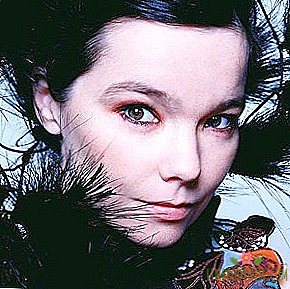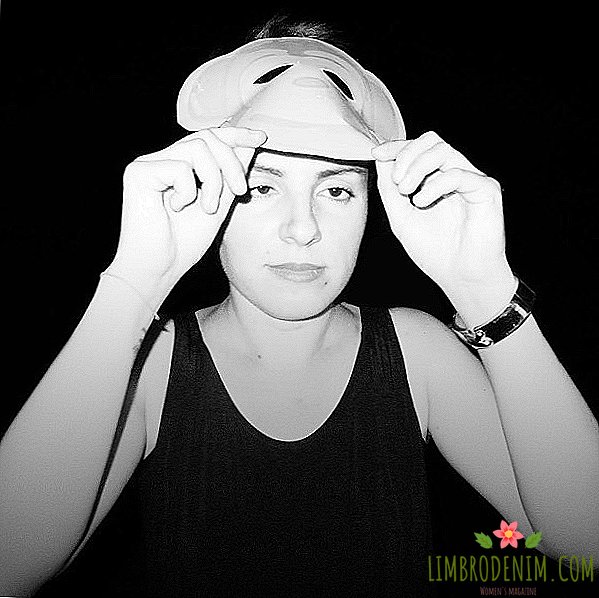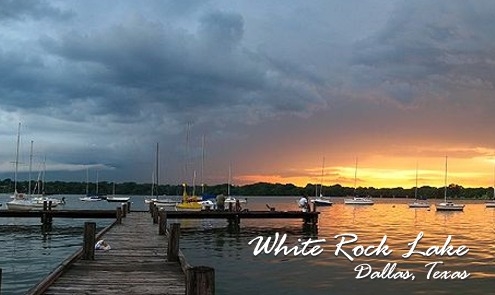How I traveled a thousand kilometers in Spain in 33 days
Once in the Himalayas, I watched a procession of pilgrims. Every eighty years, the entire village, from small to large, takes meager belongings, pipes and drums and goes through the mountain villages to the holy spring, which is poured in hot streams a thousand kilometers from their native village. Dressed Indians travel twenty to thirty kilometers a day, spend the night in the woods and at the hospitable owners of the houses scattered in the Himalayan wilderness. Musicians announce the approach of the procession with ritual melodies. Women and men put bells on their feet so that everyone knows that the pilgrims are close. Then I looked at these village pilgrims like a curiosity. "Where and why do they go? What they can not sit at home?" - I thought. And four years later she became a pilgrim herself. How did that happen?

Camino de Santiago
When I lived in Moscow, I felt that I really didn’t have enough time alone with myself. Everywhere I was surrounded by people with whom I had to communicate: colleagues, clients, friends, family. I sometimes felt that my heart was mad at me. It was the voice of a child saying, "What about me? Talk to me." I began to meditate and once I drastically changed my daily routine. About three months, I got up with dawn and went to bed at nine in the evening. I spent the morning alone and doing my favorite things. This affected my condition favorably, but it was felt that this was not enough. I promised myself that I would spend time alone with myself, and lived with this expectation for a year. Hot in the Spanish winter of 2016, I packed my backpack, put on my sneakers and went alone on foot along the Camino de Santiago from Seville, feeling all the winds of Spain with my nape.
Kamino is a Spanish word meaning "way"; literally Camino de Santiago - "The Way of Santiago". Santiago is a catholic saint, patron of pilgrims. His relics are located in the cathedral in Santiago de Compostela in northern Spain. This city is the goal of all pilgrims and the final point of the route. You can reach even the "ends of the earth" - Fisterra, but that's another story. The pilgrimage route to the city of Santiago is not one: if you look at the map of Kamino, you can see a whole network of routes. Pilgrims begin in Spain, Portugal, France, Italy, some walk directly from Russia. Generally, in ancient times, a century in the XI-XII, people just ate their breakfast, took a bundle, an empty pumpkin for water, and walked to Santiago, guided by the Milky Way. We slept where it was necessary, ate what we had, bathed in the rivers. Residents of cities and villages cared for pilgrims, giving them rest and food. And each goodbye shouted to the pilgrim after: "Buen camino!" - so that those who begin the journey must come alive and healthy.
Now everything is much simpler: the route is marked with yellow arrows and shells, it is almost impossible to get lost. In the first pilgrim city, where the pilgrim begins the route, you can get a pilgrim passport - in Spanish "credencial". My passport was Seville, with the seal of the cathedral. The passport gives the right to sleep in shelters on the way, which are called Alberg. Most of Alberg resembles cheap hostels: large room, many beds, self-catering. But the price is low: 6-10 euros for municipal Alberga, private ones are a bit more expensive; Some work on the principle of "how much you leave." The latter, oddly enough, were the best: with a warm welcome, a fireplace, a common dinner and a touching concern for pilgrims.
Paths run through picturesque nature and pretty villages and towns. Each of the paths is beautiful in its own way. For example, the way Norte stretches between the ocean and the mountains. On the French way there is an abundance of mountain passes and towns with masterpieces of medieval art. On the Portuguese way, there are villages, like those of the Hobbit, with low roofs, overgrown with moss, smoking chimneys of fireplaces. The Italian route, one of the longest, connects two pilgrim cities - Rome and Santiago de Compostela. Everyone chooses the path to your taste, he calls the second and third time for many.

Preparation for the hike
In preparation for the campaign, I relied on common sense and available materials. You must have a good backpack and good shoes for the track: it will save from painful experiences, which will be enough on the way. The rest is not so important, I thought, and turned out to be right. If something is missing, you can buy it on the way or ask pilgrims. In my arsenal there were jeans, leggings and fleece pants, two fleece jackets, a pair of T-shirts, four pairs of socks, a hat, a scarf, a waterproof windproof jacket, a first aid kit, a roll of large packages in case of rain, a sleeping bag, a hammock, a rope, an adhesive tape, a flashlight, Thermocup - that's all. Some pilgrims carried a poncho in case of rain, waterproof pants, removable shoes, an umbrella, trekking sticks, warm clothes, and cutlery. Surely this made their trip more comfortable, but I missed my luggage. If the temperature fell below zero, I just wore jeans with leggings and a windproof jacket. If it was raining, she made a poncho from the bag and put the second bag on the backpack. For all thirty-three days that lasted my pilgrimage, I used only four packages.
I think that such a journey does not require special training, and even a good physical form is not required (although, of course, you should not have any health problems). Each pilgrim goes at his own pace. Pilgrimage is not a marathon, it is a way to travel when you don’t rush swiftly along the ground or above the ground, but measure distances with your steps. This is not about records and strips taken, but about calm and enjoyment of movement, which is slow, but so natural. I didn’t prepare beforehand, but throughout the whole route I did special exercises for the back and legs in the morning and in the evening, it helped a lot. The body gets used to the loads for about a week. Your shoulders, the legs, the loins, the flayed corns, the knees, the calves, something else, permanently hurt you. Sometimes my muscles hurt, the existence of which I didn’t guess before the start of the journey. If you endure this week, then it becomes really easier, the body will ache, but not so intense, and this will not interfere with the march.
Common sources of pain for pilgrims are the legs, especially the feet, and the back. If the backpack is good, then you can somehow put up with the back, but few people can avoid the corns. Someone uses a plaster, I used cotton wool, painkillers and tape. You should also take care of the knees and the Achilles tendon. In order to strengthen the knees, exercises with incomplete squats are suitable, for the Achilles tendon, you need to stand on the socks on the stairs so that the heels are lower than the socks in the starting position. This is a minimum of exercise, but it was enough for me. The rest depends on the characteristics of the organism and the perfectionism of the pilgrim. Some installed apps with stretching exercises after the track on smartphones - also a great option.

Silver route
Usually the metabolism also changes. If a person is not a professional athlete, then during the track, metabolism accelerates, the body spends more resources on the creation of new cells, the muscles grow. For this, the body needs protein. Meat eaters are easier: they usually eat as before, adding to the diet carbohydrates. Vegetarians more difficult. I took proteins from nuts, beans and lentils, tried not to eat bread and sugar, except fruit. If I felt that a fire was raging in me, burning everything that got into it, I ate an egg - that was the end of my protein hunger. Of course, each organism is individual. If a pilgrim knows his body well, it will not be difficult for him to adjust, if he does not, he will recognize it in a practical way.
The route from Seville, on which I walked, is called Silver. It is one of the longest (about a thousand kilometers), complex (replete with mountain passes) and poorly populated (Alberge is not so much on the way as there is no backpack delivery service on the popular French route). This path goes from south to north of Spain almost in a straight line, turning in the direction of the Atlantic Ocean on the final three hundred kilometers. As soon as you leave Seville, you find yourself in village Spain with a forest, olive thickets, tangerine gardens, an ocean of greenery, cows and flocks of sheep, god of forgotten villages, whitewashed houses with tiles on the roofs, overgrown with moss. Cities on the way a bit: Merida, Cáceres, Salamanca, Zamora, Ourense and the coveted Santiago de Compostela.
Not far from Seville, outside the town of Castilblanco, the path passes through the Sierra Norte National Park. If you're lucky, the road will be crossed by roe deer and will smell of pine freshness all day long. After a few days of brisk steps you find yourself in the city of Merida, it has a Roman bridge, preserved from the times of Caesar. When you go over it from the old city to the new, it seems that five minutes ago a regiment of legionnaires passed here. From the Romans here is still preserved aqueduct. In this place and further, approximately to Salamanca, Camino de Santiago coincides with the ancient Roman road. On one hot day, when the sun, albeit the winter one, was scorched mercilessly, a Roman legionnaire in golden uniforms with a pike at the ready suddenly came out of the forest towards me. I thought I had a heat stroke. Then another pair of armor-bearers in leather sandals appeared, they waved their hand and went further to rattle their armor. I do not know which Dulcinea they saved before this, but it was obviously harder for them to go than for me. On the same day I spent the night in a monastery. Thirty-five kilometers from Merida in the village of Alquéscar, the shelter is organized right in the cells. Here, the monks not only pray, but also on a volunteer basis take care of people with mental illness. The monks are very positive, constantly smiling and joking.

Caceres, Salamanca and Zamora
The next big city on the road was Cáceres. It is interesting for its medieval castles and cathedrals. The historic center of the city can be viewed quite quickly: the cathedral, the main square, the gate and palaces - almost everything is located in the center of the old city. Caceres seemed to me very cozy, like a fabulous town with gingerbread houses. Three kilometers from Cáceres, there is the town of Cazar de Cáceres, there is a wonderful Alberga. It is located in an old mansion, a poster with a poem about friendship on Kamino is hanging on the wall, and there you could wash and dry things for free - after almost two weeks of the journey it is worth a lot.
After Cáceres, you definitely need to visit the village of Fuenteroble, in which the cheerful padre Blas lives. The Padre accepts pilgrims as children of their relatives, cares for them, feeds, waters and blesses them to continue the journey. When I went to Fuenteoblle, the road was all in streams, and then I started to rain; I was soaked to the skin, tired and cold. In the padre's house, I immediately felt that I had gotten to the right place. The deacon's wife threw up her hands, and two minutes later I was sitting by the fireplace, wrapped in a blanket, and drinking tea, and my wet clothes were spinning in the washing machine. Pastor Blaz took me with him to Mass to the next village. At the end of the Mass, he called me to the altar and blessed me in front of the whole parish. I stood at the altar and watched as one hundred people who came to Mass at the same time shade me with a cross. I cannot say that I am very religious, but this touching blessing helped in difficult days on the way.
Fifty kilometers from the house of Padre Blaza is Salamanca, it’s great to stay here for a couple of days. This city is full of the energy of youth, it is one of the centers of students in Spain. The building of the university is the oldest in Spain. It is possible for a couple of euro-coins to sit on the benches on which students lectured 700 years ago. And on the facade of the building among the thousands of other sculptures a frog was lost: it is believed that those who find it will go to the university. Salamanca has many medieval castles and two cathedrals, old and new. After the restoration, among the gargoyles, demons and angels, you can find an astronaut figure and a dragon figure holding a glass of ice cream on the façade. You don’t even have to talk about churches and cathedrals: how many gateways you can wrap, everywhere you will find a church with a UNESCO sign.
After Salamanca, the path passes through the plain. A few days because of the wind, I walked stooping, like the Tower of Pisa. Sometimes the wind was so strong that it was as if you could lie on it, a couple of times I managed to feel like a bird. In the next city, Zamora, hospitable hostels who care about pilgrims volunteer in Alberg. When I got there, I had a peeled orange in my hands. The hospitalero didn't let me eat it until they fed me dinner and were not convinced that I was full and satisfied. The city is very beautiful. The Douro River is not bound by granite, it rushes along Zamora, tamed by a stone bridge. The cathedral with the Byzantine dome, the familiar Russian eyes - the calling card of the city. The descents and ascents of cobbled streets, numerous Catholic churches, the Momos Palace - there is something to see here.

Road to Santiago de Compostela
It is good to go to Seville, Salamanca and Zamora during Semana Santa - the week before Catholic Easter. People in long caps of blue, white, violet, red flowers with slots for eyes, barefoot walk around the city, they carry huge candles and crosses. And through all the streets, the statues of Christ, the Virgin Mary and the Apostles are carried by the sounds of the orchestra. The Spaniards are preparing for this holiday all year long: they learn to carry gently and smoothly heavy pedestals with statues, they learn the melodies with the whole orchestra. Those who are not involved in the action take to the streets to watch the processions, children in caps hand out sweets and cookies. This week on the streets felt touching unity.
After Zamora and before Orense, the path becomes hilly and cool. I caught snow in the mountains, sub-zero temperatures, forest rivers poured out from behind the melting snow, which had to wade without shoes, snow storms, mountain passes, lakes hidden among the mountains. One sunny day on the mountain, I met my birthday alone with a backpack. It was one of my best birthdays, which will definitely remain in my memory.
On the way from Zamora in Orense, you can stay overnight in the village of Tabar, there is a very welcoming atmosphere in the Alberg, almost like Pastor Blaz. The hospital itself went through Camino and published several books with photographs. It preserves the tradition of hospitality: it feeds pilgrims with dinner and breakfast, does not specifically install Wi-Fi in the Alberga, so that the pilgrims communicate with each other, provides a washing machine for free.
After Tabara there is another big city - Orense, the industrial center of Galicia. The road here passes mainly through the hills. In Orense, a large stone bridge of Roman construction has been preserved; there is a museum of modern art and a cathedral. Alberg here is located next to the cemetery, but sleeps well. From Ourense to Santiago de Compostela a few hundred kilometers.
When you come to Santiago, the main thing is to find the cathedral. It can be seen from afar, but when you come closer to him, he seems to run away, delaying the joy of the meeting. In the cathedral are the relics and the cherished statue of the Apostle Santiago. He is depicted as a pilgrim, with a staff and a dry pumpkin for water. By tradition, every pilgrim who comes to the cathedral embraces the statue of Santiago. When I reached the cathedral, there was a serious mass in it, but the deacon forgot to close the altar, and every now and then you could see the hands of pilgrims hugging Santiago behind the monks. I laughed to myself: life is everywhere.

The cathedral also has a famous huge censer, they say that it is made of silver. It is used now on major holidays: burn incense, and three novices for a large rope swing censer. But earlier it was used daily: pilgrims, exhausted by the way, often spending the night under the open sky and washing in the rivers, smelled not lily of the valley at all.
If you want to receive a certificate of pilgrimage completion, not far from the cathedral in the office for pilgrims in Santiago de Compostela, you need to show your passport with stamps, and a cute girl or boy with great joy will issue a certificate in Latin indicating how many kilometers you have traveled and wishes miracles in life. And Catholics for the passage of at least the last one hundred kilometers to Santiago also give indulgence. In the city itself there are a lot of pilgrims, they can be tracked down in a crowd by limp, bent back, hiking clothes and bright faces. Reached, reached!
Why do people go on pilgrimage? It is difficult to answer unequivocally. Someone wants to forget something, someone wants to figure it out with himself, someone accidentally gets on the route, someone follows the company, someone just needs to refresh his outlook on life. Regardless of expectations and goals, the traveler’s road is filled with surprises, care, strange conversations, interesting meetings, reflections. And everyone gets his unique experience that he needs here and now.
What was Kamino for me? When people ask me if it was worth it, I do not hesitate to answer: it was worth it! It was thirty-three days full of the cares of the world for me and my care for the world. Thirty-three days of footsteps on the ground, burnt hair and sunburned face Тридцать три дня разговоров с собой, когда сам себе становишься другом, перестаёшь мучить себя, даёшь себе быть, плакать, радоваться, помнить, шутить, молчать. Тридцать три дня единения с природой. Однажды меня лизнул бычок, переполненный чувством доверия к людям, иногда дорогу перебегали зайцы, и я, как в детстве, смотрела на них с восторгом. Бывало, что целый день пахло сладкими цветами сальвии, или утром паутинки росы покрывали сетью траву и кусты, а в мельчайших каплях воды играло солнце. Иногда на рюкзак садились божьи коровки и, как пассажиры, ехали до следующей остановки.To the right and left were orange orchards, it was possible to pick ripe fruit from the ground. Joseph Brodsky knew what he was talking about. Now I know too.
I want to share useful links with guidebooks, tips on preparation, information about shelters on the way in English and Spanish: Camino de Santiago Pilgrimage, Caminoteca and the Alberg information page. These sites are enough to learn about the path, decide what to take with you and where to sleep. There are few links, because I did not specifically read about the upcoming journey, I usually did not even know exactly where I would spend the night - in a hammock or in an alberga. At my disposal were two leaves with the names of the shelters and an indication of the distances between the settlements - that's all.
Buen camino!
Photo: 1, 2, 3, 4, 5, 6 via Flickr, Wikipedia





